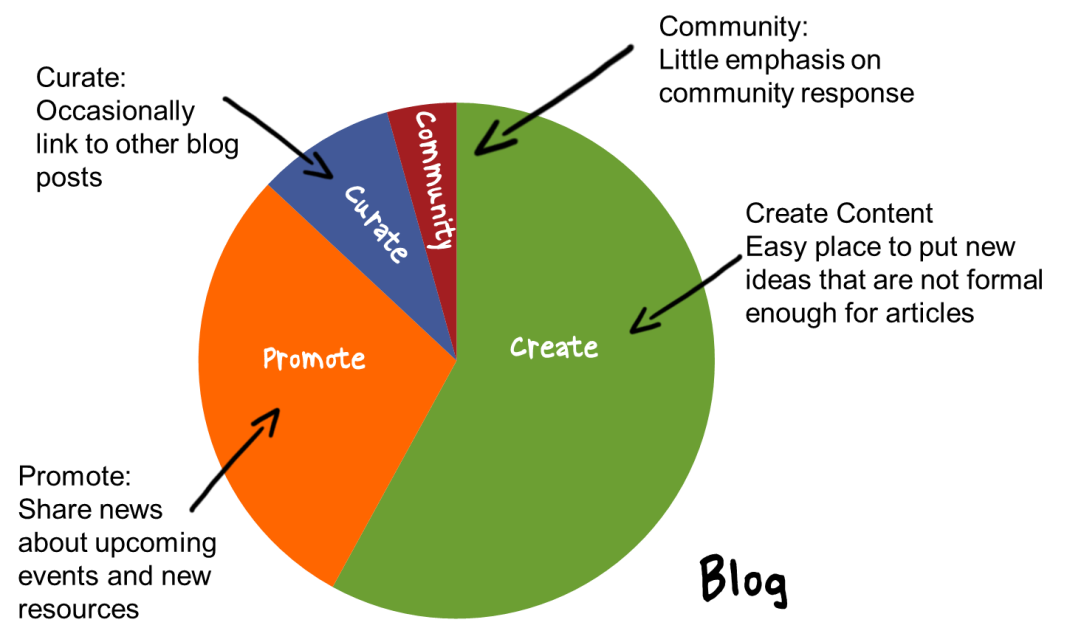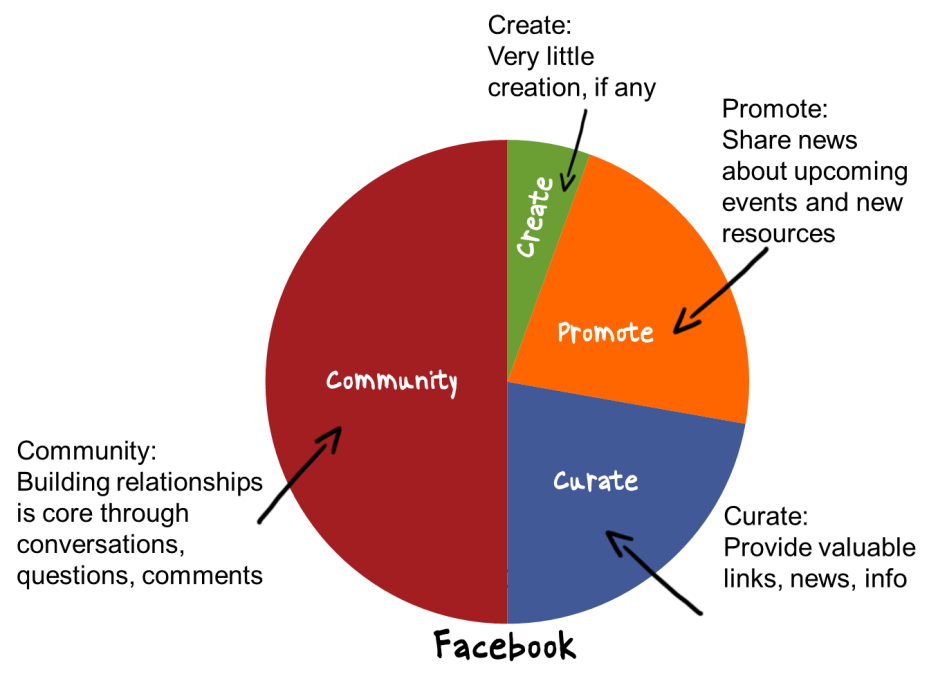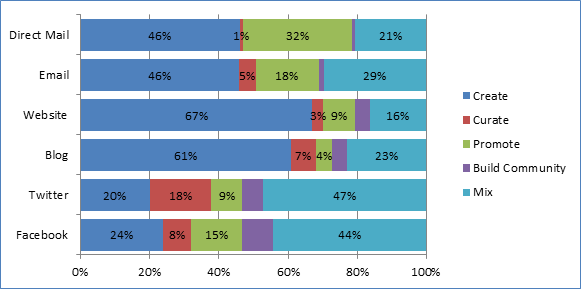
Top Tips for Fundraising: Social Change Anytime Everywhere
This article was written by guest author Amy Sample Ward, CEO of the Nonprofit Technology Network (NTEN).
 In the first article in this series, I shared three tips for successful multichannel advocacy campaigns. To continue sharing from our recent book, Social Change Anytime Everywhere: How to Implement Online Multichannel Strategies to Spark Advocacy, Raise Money, and Engage Your Community, today I'm focusing on tips you can use to support your next fundraising effort.
In the first article in this series, I shared three tips for successful multichannel advocacy campaigns. To continue sharing from our recent book, Social Change Anytime Everywhere: How to Implement Online Multichannel Strategies to Spark Advocacy, Raise Money, and Engage Your Community, today I'm focusing on tips you can use to support your next fundraising effort.
1. Think of your ask as a series
You have undoubtedly read many books and blog posts telling you that you need to boil your fundraising campaign “ask” down to one very clear and direct call to action. While you do need a a good ask (think “donate $20 to provide basic school supplies for this 2nd grade class” and not “donate $20 to this school”) you should think about how you make the ask as a multipart series.
When you launch your campaign, you have many stories, data, and information to share with your supporters. Instead of overwhelming the donor with everything at once, break down all of the content you have that supports your ask and create a series. An example series could be: a message that introduces supporters to the issue and then makes the initial ask; next, a message that shares more information and stories about those being served (and the ask again!); and then one to provide an update on how the campaign is doing and the support that is still necessary.
2. Segment!
Whether you have 10 or 10,000 people on your email list, it is inevitable that they aren’t all interested in the same aspects of your work, respond to the same kind of content, or even engage online in the same way or frequency. You should provide clear communication preferences to your subscribers so they can choose the kinds of messages they are most interested in, and you can avoid sending them messages that will prompt them to leave your list. Beyond that, even within a specific campaign, you need to segment!
Before you launch your campaign, as you start to plan out the various emails and messages in your series, you should also identify segments to include on a message-by-message level. Your first message may go to one big group, but the follow up message should, for example, be segmented so those who did not open or donate yet receive a different message than those who already took action. Segmenting like this helps you better communicate with your supporters –- you can thank those who already donated and ask them to share the campaign with their friends and family while providing a different angle on the issue and another ask to those who did not yet take action.
3. A/B testing
You’ve got a series of messages planned, and you're segmenting your list to send appropriate messages to the right people. But are they the best messages they can be? That’s where A/B testing comes in! A/B testing can be as complicated or as simple as you want it to be, and is something you can start doing today.
Here’s how simply it can work: If you have a message going to 1,000 people, for example, pull 100 of them out and send a message to the first half with one version of your subject line and then a different subject line to the other 50. Give it an hour and see which email had more opens and clickthroughts. Send the other 900 people that message!
Do you have any fundraising tips to add? Share them in the comment section!
Top Tips for Advocacy: Social Change Anytime Everywhere
This article was written by guest author Amy Sample Ward, CEO of the Nonprofit Technology Network (NTEN).
 In our recent book, Social Change Anytime Everywhere: How to Implement Online Multichannel Strategies to Spark Advocacy, Raise Money, and Engage Your Community, Allyson Kapin and I share successful approaches to making change in this multichannel world. Your supporters are using myriad tools every day, and your opportunity is to give them content they are interested in sharing so they can spread your message on your behalf, easily, wherever they are.
In our recent book, Social Change Anytime Everywhere: How to Implement Online Multichannel Strategies to Spark Advocacy, Raise Money, and Engage Your Community, Allyson Kapin and I share successful approaches to making change in this multichannel world. Your supporters are using myriad tools every day, and your opportunity is to give them content they are interested in sharing so they can spread your message on your behalf, easily, wherever they are.
From our chapter focused on advocacy, I want to share three top tips:
1. Use multiple channels to engage people
When we are in the office, planning out our content or appeals, it’s easy to think of every piece as a linear path: people receive our email, click on the link to visit the microsite, take the action and then share it on Facebook, for example. What we miss when we think about our content in a multichannel but linear path is the reality with multichannel content: people may enter at any point!
You aren’t just interested in engaging those already on your email list who can send the call to action to directly. As such, you don’t just want to use multiple channels to move people, but actually engage them. Ensure that the microsite and social promotions all create natural “starting places” for people coming across your call to action or campaign for the first time. It’s important to keep people moving, after they take one action to give them the next one; it isn’t though, realistic to think you can predict the path they will come in on and stick to throughout.
2. Tell stories that move people into action
We’ve all heard it: Tell stories! Sure. I can tell a story. Just any old story won’t do, though. I bet you can think of a story right now that if you told it in even the most dynamic, multichannel way, you would even bore yourself. So, make sure you and your team are thinking not just of converting information into a story, but finding and sharing stories that are tied to action.
These kinds of stories have two pieces. First, they have the core components of a story arc: an individual person (or team or organization, depending on your audience and mission) that meets a crisis (this doesn’t need to be a literal “crisis” but a challenge, what makes all good stories worth a struggle) and overcomes that crisis. Second, and important for your campaign, they show how supporters can help with this process of overcoming the crisis – be it for one more person or a legislative systemic change.
3. Measure, learn, and iterate
It’s easy to think that your next advocacy campaign will mean weeks of planning with various staff, launching and running it publicly, and then some reflection and evaluation about how it all went so you can improve for the next one. In order to be as effective as you can with a multichannel campaign, you’ll need to identify ways you can measure each piece of content and the engagement of each channel in real time. The more you can learn on the fly and iterate as you go, the better.
I know, that sounds like even more work in the middle of a campaign when it’s already “go, go, go” time. It doesn’t have to be more work, if it is smarter work. Identifying easy to capture metrics ahead of time and thresholds that you want to meet for your content will help you lighten up posts on channels that aren’t responding (saving time) and let you concentrate on channels that are showing more engagement (optimizing investment). If you see that likes and shares of campaign messages on Facebook have dropped significantly, for example, while reblogs of campaign images on Tumblr have increased, you know you can decrease the number of posts you’re pushing to Facebook and give more attention to posting and to responding to supporters on Tumblr.
Check out more tips and buy your copy of the book today!
Share, Like and Post | | Article Link | Comment3 Ways That Integrated Marketing Can Fail for Nonprofits
 Successful integrated marketing is not just about what you put out there in the world, but it’s also the internal process that counts. A common misstep that nonprofits make is to spend most of their time looking at the content that they will ultimately post, and neglect the critical internal factors that enable success, such as coordinating across departments.
Successful integrated marketing is not just about what you put out there in the world, but it’s also the internal process that counts. A common misstep that nonprofits make is to spend most of their time looking at the content that they will ultimately post, and neglect the critical internal factors that enable success, such as coordinating across departments.
A strong integrated marketing strategy includes not only consistent brand messaging across all channels, but also an integrated internal team. Your audiences view and support your organization as a whole, not in fragmented silos of IT, fundraising, marketing, programs, or leadership. Streamlining the process internally to accurately represent the organization’s identity will help to ensure that you don’t confuse your audience with different personalities, opinions, and voices.
Following are three common mistakes that can undermine your integrated marketing efforts:
#1 - Having Multiple Personalities
Skilled marketers act as a sounding board and filter for their colleagues across all departments to ensure their organization’s messages are in alignment with its brand. But that never stops the perennial struggle between departments over territory.
For example, when your program director’s intern creates your organization’s new “viral” video campaign, or your executive director gives an interview that strays from the position you’ve stated in press releases -- these inconsistent situations can make your nonprofit look like it has multiple personalities, and reveal a lack of organization within your team. The messages that your nonprofit puts out inextricably represent the entire organization, not just one department.
Solution: Cross-departmental meetings should be mandated by leadership to enable cross-pollination between departments, such as thorough weekly checks-ins to discuss content for the week, or fundraising program proposals. Holding staff members accountable with feedback mechanisms like 360-degree performance reviews can also help to institutionalize collaboration as a key staff responsibility.
#2 - Unclear Call to Action
Donors and the community are the lifeblood of any nonprofit, and their vote of confidence with their support signifies the public trust and credibility of your work. You need their support -- so ask for it, and tell them why.
We’ve all received emails that are excessively long, and when you’re done reading, you’re not sure what exactly they want you to do. Read the new report? Attend an event? Sign a petition? Donate now? Messages that have too many asks will confuse your audience, and you’ll risk losing their attention.
If your nonprofit has a lot of things to say, take the time to coordinate how to disseminate these messages, which channels to use, and when to push the messages. Some messages might better fit in a monthly newsletter, a weekly update email, or social media. With so many competing emails in your supporters’ inboxes, get their immediate attention by getting immediately to the point.
Solution: Play into the principle of effective repetition by being consistent with what you’re asking them to do. Avoid multiple asks in one email message that direct you to different pages on your website; instead, prioritize what you want the supporter to do. Consider using images in lieu of more text, and embed a link where the supporter can learn more on your website. The bottom line: always keep the user experience in mind.
#3 - Forgetting Your Colleagues are Stakeholders
Getting internal buy-in is a critical factor for success. It matters what your supporters think of you, but your colleagues’ perception of you and your work is equally important. Marketing departments are inter-departmental support functions, and without internal buy-in for their efforts, you run the risk of misrepresentation. For example, if one team is writing a promotional piece about the impact of your nonprofit’s work in the field, and doesn’t consult the local program director, they run the risk of skewing the accuracy of the information, or missing out on a great story that your community might appreciate.
And, it’ll help you avoid mistake #1.
Solution: Your teammates were hired because of the skills and expertise that they possess for the job: tap into it! Building trust amongst your peers takes time and genuineness, but you can start with the most flattering question, “can I get your opinion on something?” Then, find a way to integrate this opinion into your work, and give credit where credit is due. It’ll help you out in the long run.
How else have you seen integrated marketing fail? Leave a comment and let us know!
Share, Like and Post | | Article Link | CommentNominate a Nonprofit for the 2014 IMAB Integrated Marketing Awards
 Would you like your nonprofit's integrated marketing success recognized in the industry? Do you know of a great example of integrated marketing in the sector? Nominating a nonprofit (even your own!) for a 2014 IMAB Integrated Marketing Award would be a great way to celebrate breakthrough results!
Would you like your nonprofit's integrated marketing success recognized in the industry? Do you know of a great example of integrated marketing in the sector? Nominating a nonprofit (even your own!) for a 2014 IMAB Integrated Marketing Award would be a great way to celebrate breakthrough results!
The call for entries for the 2014 IMAB Integrated Marketing Awards is now open. Deadline for entries: Friday, February 7, 2014.
Submit your nomination today! You can nominate as many nonprofits for as many awards as you like. The IMAB will review each nomination, select winners, and present three awards at the NTEN Nonprofit Technology Conference March 13-15, 2014 in Washington, D.C. Winning campaigns also will be featured in articles on the IMAB blog.
In the spirit of the IMAB's mission to share best practices in integrated marketing in the nonprofit industry, the Integrated Marketing Awards recognize the results of integrated, multi-channel marketing campaigns or programs in each of the three core pillars of integrated marketing:
- The Donor: Demonstrate how your organization’s integrated marketing campaign or program had an impact on donor satisfaction and the donor experience.
- The Organization: Explain how an effort across your entire organization demonstrates alignment of strategy, structure, culture and skills to showcase integrated marketing efforts.
- The Practice: Include a real-world case study that highlights best practices in the field of integrated marketing.
Last year’s winners of the IMAB Integrated Marketing Awards were:
- The Donor
Canadian Cancer Society in Saskatchewan won in the category of The Donor for demonstrating how an integrated marketing campaign or program had an impact on donor satisfaction and the donor experience. The organization committed to integrate every campaign in 2012 so that no event or campaign was conducted through a single channel only. Donors were encouraged to participate as volunteers and advocates, and advocates and volunteers were encouraged to donate. - The Organization
The Ontario SPCA and British Columbia SPCA, both leading animal welfare organizations in their respective provinces, won in the category of The Organization, demonstrating how an effort across the organization aligned strategy, structure, culture, or skills to impact the organization’s ability to integrate its marketing efforts. The organizations worked together to share management, expenses, marketing and work in bringing a successful fundraising event from Australia to Canada. - The Practice
The American Diabetes Association, an organization leading the fight against the deadly consequences of diabetes and fighting for those affected by diabetes, won in the category of The Practice for sharing its real world case study highlighting best practices in the field of integrated marketing. The organization quickly spun up a highly integrated “Giving Tuesday” campaign around their Step Out: Walk to Stop Diabetes walk.
Don't forget: The deadline for entries is Friday, February 7, 2014. Any person may nominate an unlimited number of nonprofit organizations in each award category. So, consider which organizations you would like to nominate, and be sure to submit your nominations today!
Share, Like and Post | | Article Link | CommentPart 2: Mapping Your Mix — Is Your Nonprofit Providing the Right Mix of Content?
This article was written by guest author Laura Quinn, founder and executive director of Idealware, a nonprofit that helps other nonprofits make smart decisions about software. For more information about your organization’s communications mix, download Idealware’s free Practical Guide to Integrated Communications, which provides a series of workbooks to walk you step-by-step through the process of integrating all your channels into cohesive messaging. This article originally ran in NTEN:Change.
In my last post about providing the right mix of content, I wrote about the types of content-related efforts you should be making. But what’s the balance you should aim for? You will likely have a different mix on each channel. For instance, you might decide that the vast majority of information on your blog should be new stories and opinion pieces written specifically for the blog, but that the primary goal of your Facebook page is to build community and promote events and resources.
Consider what types of content will work best for each channel, and how much of each type your organization is likely to need. It’s useful to diagram out the mix for each channel. We like to use a pie chart, as it provides a tidy circle for each channel that you can then combine into additional diagrams. As an example, here’s a possible mix of types of content for a blog:

But that mix is likely to change for different channels. Here’s a different mix for a Facebook page:

Of course, the actual mix will depend on your organization and goals, but remember that different channels lend themselves better to different types of communications. For instance, direct mail and email are very important communications method for many organizations, but neither is a great way to build community. Instead, they’re both great places to share original content, to ask people to take action with promotions or appeals, or even to provide some curated resources or links as part of newsletter.
In a survey that we conducted last year with readers of the NTEN:Change journal, which is published by the Nonprofit Technology Network, we asked readers to define what percentage of their resources were creation, curation, promotion, or community building for each channel. (We received responses from 256 readers.) What we found, interestingly, was that many reported using each channel primarily for a particular purpose—for example, for a given organization 80 percent of what it does on a single channel is create new content, with only limited effort devoted to other uses.
The graph below illustrates this across each channel. The percentage in each bar represents the number of people using these channels primarily (at least 60 percent of the time) for the given purpose. The first bar shows that 46 percent of the respondents are using direct mail primarily to distribute created content, just one percent are using it to curate, and 32 percent are using it primarily for promotions and appeals. The last number, 21 percent, shows the number of people who were not using the channel for any one purpose a majority of the time.

Diving into these numbers in more depth, most people were using direct mail and email either primarily to deliver newly created content, or to promote existing events or appeals. For example, 46 percent of everyone using direct mail or email use it primarily (at least 60 percent of the time) for creating content. Another 32 percent use direct mail primarily for promotions or appeals, while 18 percent use email primarily for that purpose. Respondents told us their websites and blogs filled similar roles to each other—67 percent were using websites and 61 percent blogs primarily for newly created content. A much smaller percentage were using these channels primarily for promotion, curation, or community building.
The most informal of the social media channels, Twitter and Facebook, often fill a very different role. More people were using these channels for curation than any other—the formats and “etiquette” of both channels are both well-suited to reposts and links—and more were focused on community building, a natural fit for social media. While some people still used them primarily to deliver original content, it’s not an optimal use for them, as neither is as good a means of delivering a lot of text or a series of images as email, websites, or blogs. Respondents also tended to have more complex strategies for these channels, with close to half reporting that they did not use them primarily for any one content strategy but instead for a mix of purposes.
Putting it to Work
So what does this mean for your organization, and how can you apply this information to your own work? Start by making a list of the channels you’re using, or would like to use, and think through the types of content you’re providing for each. Map them out in a chart, and consider whether your strategy makes sense.
Does it correspond well to your communication goals? Is something not working that you can change for better results? For instance, if you’re creating all new content for every channel, but curating existing content will provide as much value, making a change can save you a lot of time.
Remember, there’s no absolute right answer—it’s a work in progress, so don’t be afraid to change things around if they’re not working. In the end, mapping them out can help you think them through by more clearly showing what you’re doing, help you to be more strategic about how each channel is contributing to your overall goals, and lead to better communications.
Share, Like and Post | | Article Link | Comment

















